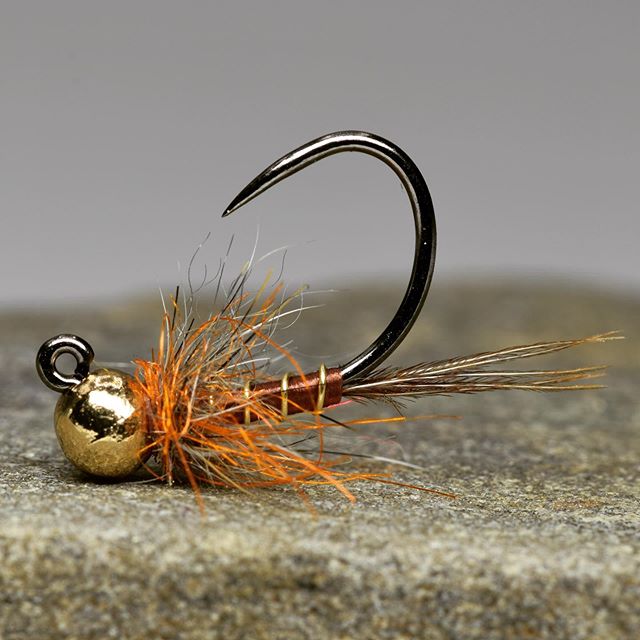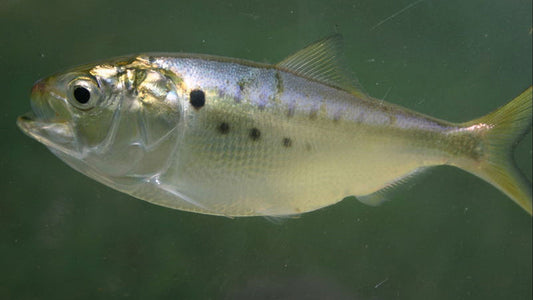
The 6 Benefits of Fishing Flies on Jig Hooks
Share
Written By: Josh Thelin / Photos By: Nate Wight
There are very tangible benefits to fishing flies on jig hooks. This has been something which has increased in popularity especially with the techniques of Euro and/or Czech nymphing really taking off in fly fishing. For the anglers who do a lot of nymphing or fish their leeches and streamers down along the bottom, here are the added values of fishing flies tied on jig hooks. The benefits are also not exclusive to freshwater nymphs and can be certainly translated to sculpin imitations or even clouser or crab patterns in saltwater.
1. Rides Hook Up
When fishing nymphs along the bottom, or dragging saltwater crab patterns along the sand, having your fly ride with the hook pointed up is clearly beneficial. This can be done with properly balanced/weighted eyes (or beads) on turned down eye or even straight-eyed hooks, but when weight is added to angled jig hooks, they will ride hook up and level and provide a much more stable position. This gives an assured drifting or "swimming" position along the bottom allowing you to not get hung up on the rocks, sand, grass of the water's floor. This also helps to keep your fly from tilting one way or the other and not scraping and dulling your hook point.
2. A Better Hook Set and Position
For the above mentioned reason, this also presents the ability for the fly to be set into the fish’s mouth in better way. Usually this means getting the fly set in the top or corner of the mouth. These spots in the mouth hold hooks much better and give you a better chance of not losing that fish. You also have better control when trying to turn the fish's head while fighting.
3. Better Feel of the Flies
This is especially true when nymping on a tight-line or euro system where you need to really feel the bottom of the river. When weight is added to jig hooks the eye of the fly is what is bumping along the bottom, instead of simply the hook shank or body of the fly. This gives the angler a better feel of if/when their flies are hitting the bottom which in turn gives you feedback on where in the water column you are.
4. Slotted Beads
Similar to #3, but when a slotted bead is used in tying a nymph on a jig hook, the center of gravity changes. This helps to angle the hook in a position similar to the nymph in the main image of this blog which gives an even better feel for where the flies are in the water column and if/when they are hitting the bottom on rocks, etc.
5. Fighting Fish
We want all the advantages we can get when fighting fish, especially the big ones! When a fish has been hooked with a fly on a jig hook, the fly line (and leader/tippet) is essentially parallel to where the bend of the hook is. When this happens, the leverage that the fish has is reduced and can provide a much more certain hook set in the fish's mouth. This is especially true with our Landlocked Salmon here in Maine which usually go arial (at least once) during the fight. With all the head shakes and jumps, the jig hook can give the angler the advantage. When the hook is set properly, you will find the fly pops out a lot less.
6. Movement
Whether it's a straight eye, turned down, turned up, or jig style hook, all of these give the fly a particular movement or "swim" in the water. As fly anglers, we are always looking for interesting ways for our flies to appear or move in the water. Jig hooks are popular to tie on for streamer patterns as well. The angled eye gives the fly a very undulating movement when stripped. It's a very up-and-down appearance which can give the look of an injured or confused baitfish. It's also becoming one of the most popular ways to tie a sculpin pattern as it keeps the fly on the bottom, riding hook up, and "hopping along" when stripped.

LEAVE A COMMENT BELOW!
If you have any questions please feel free to contact me: josh@allpointsflyfishing.com



2 comments
Hey Cameron, I just sent you an email!
Hi, I’m a newbie, was wondering, when you place a jig hook into your jaws do you have to adjust the tying of the fly seeing it’s going to be upside down? Also do you have to be a euro nymph/ Czech fisherman to use the jig flys? I’ve never heard of a fly fisherman with a 8ft rod using jig heads for nymphing? I’m new to this so please excuse my lack of knowledge on the subject. I’m sorry if I come across rude, I have a older gentleman set in his ways of fly fishing and I can just hear what he is going to say about this. Thanks in advance,
Ernest Cameron. Wy.